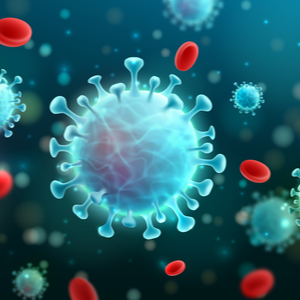
Viruses are relatively simple in structure. They consist of one or several molecules and are sometimes surrounded by a protein envelope. The molecules contain the genetic material - i.e. the DNA or RNA - with the information for their reproduction. Unlike bacteria, viruses neither consist of their own cell nor do they have their own metabolism. They have no energy production of their own and no possibility of protein synthesis. Therefore, strictly speaking, they are not living organisms.
Viruses are tiny, only around 20 to 300 nanometres in size. That is why they cannot be seen under an ordinary light microscope, but require an electron microscope. Viruses come in many different forms. Some viruses look almost like tadpoles with a long tail, others are round or even rod-shaped.
In this blog we provide an overview of viruses and frequency therapy:
- Adenovirus
- Alphaviruses
- Arboviruses
- Borna virus
- Bunyavirus
- COVID19 (coronavirus)
- Coxsackie B1 virus
- Coxsackie B2 virus
- Coxsackie B3 virus
- Coxsackie B4 virus
- Coxsackie B5 virus
- Coxsackie B6 virus
- Cytomegalovirus
- Echo virus
- Enterovirus
- Epstein-Barr virus (EBV)
- Exanthema subitum
- Shingles (varicella zoster virus)
- Hand-foot-and-mouth syndrome
- Hantavirus
- Hendra virus
- Hepatitis type A virus
- Hepatitis type B virus
- Hepatitis type C virus
- Genital herpes
- Herpes simplex virus type 1 (HHV-1)
- Herpes Simplex Virus 2 (HHV-2)
- Herpes zoster
- HIV Aids viruses
- Human endogenous retroviruses
- Influenza viruses
- Lassa fever
- Measles
- Human T-lymphotropic virus 1
- Human T-lymphotropic virus 2
- Mumps virus
- Noroviruses
- Pfeiffer's glandular fever
- Pneumoviridae
- Reovirus
- Retroviruses
- Rhinovirus
- Rubella viruses
- Sars 1
- Sars 2
- Varicella zoster virus
- West Nile Virus
- Xenotropic Murine Leukemia Virus
- Zika viruses
